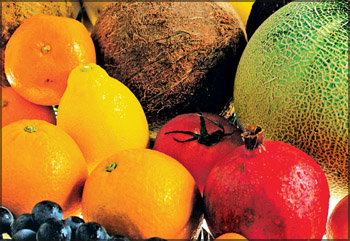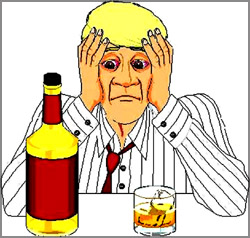|
Healthwatch
|
Compitled and Coordinated by edward
armbewela |
Broadening health
education on food and food additives in asthma
Most of our people believe that certain food items could aggravate
asthma in those who are already affected with the disease. I have had
several inquiries made on this from patients who have come to the
Colombo National Hospital OPD for treatment where I am working.
Being in the Healthwatch Medical Advisory panel. I thought it
worthwhile to refer to an article written on this subject Food and
Asthma by Dr. P. N. B. Wijekoon Consultant chest physician, Central
Chest Clinic, Colombo, in the 3rd edition of SLMA Guide Lines on Asthma,
where he says.
“Indeed some patients in Sri Lanka chiefly attribute worsening of
their Asthma to changes in weather bathing in cold water and certain
food items. Whether these factors actually worsen Asthma is
unsubstantiated, as no definitive controlled studies have been done.
However they cannot be dismissed out of hand.”
Here I am reproducing some sections of that article, as it is good
reading material for the Health Watch for its objective of health education of the readers on Asthma.
objective of health education of the readers on Asthma.
Dr. P. N. B. Wijekoon
Diet was recognized as a possible contributory factor in asthma as
long ago as the 19th century. Salter (1870) classified the provoking
causes of asthma under three headings; “respiratory irritants,
alimentary irritants and irritants affecting the nervous system”.
By the early 20th century dietary restrictions were (and still are,
in eastern cultures) part of standard advice given to patients.
However, in the late 1940’s, it was increasingly recognize that
dietary restrictions may do more harm than good possibly by causing
deficiencies in essential vitamins and trace elements such as
pyridoxine, ascorbic acid, nicotinic acid, sodium, magnesium, selenium
and polyunsaturated fatty acids. Some of these deficiencies have been
postulated (but not proven) to worsen asthma.
In Sri Lanka, many asthma patients attribute exacerbations of their
asthma to various foods, especially sour plantains, king coconut water,
tomatoes aubergines, pineapples and iced carbonated drinks.
Indeed, some patients in Sri Lanka chiefly attribute worsening of
their asthma to changes in weather, bathing in cold water and certain
foods. Whether these factors actually worsen asthma is unsubstantiated,
as no definitive controlled studies have been done.
However they cannot be dismissed out of hand. In the western
countries, peanuts are such a potent factor in causing exacerbations of
asthma, even death, that many food items display prominently on the
package whether they do or do not contain nuts.
In the same way, it is possible that some foods indigenous to Sri
Lanka, and the pesticides they may contain, do cause exacerbations of
asthma. Some foods can produce bronchospasm via an IgE mechanism in
sensitized individuals.
These include nuts, fish, shellfish, eggs and various seeds.
Co-existence of unstable asthma and peanut allergy is particularly
dangerous and has led to a number of deaths.
Food additives
Several chemicals that are used as additives in food and drug
preparations have been associated with worsening of asthma and should,
wherever possible, be avoided.
Tartrazine
Tartrazine, (E102), a yellow dye, is used as yellow colouring in many
foods, confectionaries, beverages such as cordials, carbonated drinks
and drugs. Tartrazine sensitivity may affect up to 4 per cent of
asthmatics, especially children, and cause bronchoconstriction and
urticarial rashes’.
Metabisulphites
Bisulphites and metabisulphites are antioxidants used as
preservatives in several foods such as sausages, fruit cordials, salads,
beer and certain medications. They typically produce bronchoconstriction
within 30 minutes of ingestion and this is probably related to the
release of sulphur dioxide (SO2) after ingestion, since sulphur dioxide
is known to provoke bronchoconstriction in some asthmatic subjects.
Monosodium glutamate
Monosodium glutamate (MSG, E621) is a flavour enhancer, used in soy
sauce, Chinese food, hamburgers and spices. Some people react with
sweating, flushing and numbness of the chest.
In patients with asthma, this may be accompanied by wheezing (Chinese
Restaurant Asthma Syndrome). An attack of asthma induced by MSG may be
severe and it may be difficult to establish cause and effect as symptoms
may not appear until 12 hours after ingestion.
Cow’s milk allergy
There is widespread belief in some communities that cow’s milk
allergy is a potent cause of asthma. This is not true. Cow’s milk
allergy usually presents as cutaneous and/or gastro intestinal symptoms.
Respiratory manifestations are uncommon.
Breast Feeding
The evidence for a protective effect of breast feeding against the
development of asthma is conflicting.
A systematic review and meta-analysis involving 8183 subjects
followed for four years revealed a significant protective effect.
However a more recent study involving 1246 patients found that breast
feeding was associated with a reduced risk of infant wheeze but with an
increased risk of asthma at six years.
Dietary
manipulation Minerals
Low magnesium intakes have been associated with higher prevalence of
asthma. Studies of sodium, magnesium, and antioxidant supplements such
as selenium and vitamin C have produced little or no evidence of
benefits amongst patients with asthma.
Mana Suwa Piyasa Psychiatric Clinical and Research Centre completes
four years
Sri Lankas first Psychiatric Clinical and Research Centre - Mana Suwa
Piyasa setup by the Sri Jayawardanapura Medical Faculty, at the Colombo
South Teaching Hospital setup in March 2003 completed four years this
October.
To mark this event the Centre’s Management Committee, comprising its
founder Prof. Samudra T. Kathiriarchchi, Hospital Director Dr. W.G.
Gunawardena, and Dr. Lucian Jayasuriya among others organised a patients
work exhibition and sale at the Centre last week. The monies realised
are to be used for units expansion and research work.
It has a mission of becoming a centre of excellence in providing
holistic care to the population across the life cycle, to provide
opportunities for capacity building in the field of mental health and
conducting research.
Prof. Kathiriarchchi writing on the centre says the long felt need
for a purpose built psychiatric unit that could provide efficient
psychiatric services to the public, train personnel to improve capacity
in the field of mental health and providing a research base for
researchers, became a reality with the establishment of Mana Suwa Piyasa
in 2003.
The centre was my dream in 1996, when I commenced my clinical service
at the Colombo South Teaching Hospital to train medical under graduates
of University of Sri Jayawardanapura.
At the time students interviewed patients on corridors, several
doctors interviewed many patients on sensitive issues in one small room.
Every possible avenue was explored to gain access to a decent
interviewing area and in ward unit, but without success.
With the support of the director Colombo South Teaching Hospital, Dr.
W.G. Gunawardana, Dr. Lucian Jayasuriya seeds of a propose built
psychiatric unit implanted in my mind, which from the concept paper to
the completion of the project went through several stages in a logical
and systematic sequence.
With the joint effort of the University administrators, medical
students and representatives of the Ministry of Health I made a
presentation to the presidential fund on July 02, 1999, and after
careful consideration of the merits of the project, funding was granted.
Commencement of the project took place on March 2, 2000.
Stress relieving creative oriental dance
Stress relieving creative oriental dance music and drumming evening
“Salamba” is to be held by a recently
|

Picture shows two of them Isuru Weerasinghe and Geethani
Warnapura and the group in a dance. |
graduated duo in oriental dancing from the Sri Jayawardenpura
University, with the help of a few young talented artistes.
The duo Isuru Weerasinghe and Geethani Warnapura speaking to the
Healthwatch on their health promoting and stress relieving venture said
“We are doing this to honour our teachers both in the University and
outside in our schools earlier, who right along encouraged us to further
on in our, oriental dancing talents and comeout with creative work.
They said they are coming out with a bit of their creativity in some
stress relieving items in their teacher honouring cultural evening at
the Lionel Wendt Theatre on Sunday November 11 at 6.30 p.m.
They are due to leave to Singapore for further studies for their MA
degree in oriental and creative dancing and music.
When nice molecules turn naughty
Two interesting talks are due at the Sri Lanka Medical Association (SLMA)
Foundation Sessions to be held from Friday November 16 to 17 at its
Lionel Memorial Auditorium No. 6, Wijerama Mawatha, Colombo 7.
Chief Guest at the inauguration on Friday is Dr. Suriyakathi
Amarasekera (Immediate Past President SLMA). The two interesting talks
at its symposium 1 on November 16th under Intensive Care are on.
(1) When Nice Molecules Turn Naughty; by Dr. Panduka Karunanayake,
Senior Lecturer in Medicine, Colombo Medical Faculty, and Sessions SLMCH
(2) Taking Care of the naughty molecules - by Dr. Senaka Rajapakse
Senior Lecturer in Medicine, Colombo Medical Faculty.
E.M. Wijerama Endowment Lecture is to be delivered, at the
inauguration of this session by Prof. Anoja Fernando, at 6.30 p.m on
November 16. Her topic is Bioethics in the 21st century: responding to
the challenge Prof. Fernando is the Senior Professor of Pharmacology of
the Ruhuna Medical Faculty.
Sir Marcus Fernando Oration is to be delivered by Prof. Sarath
Lekamwasam, Professor of Medicine Ruhuna Medical Faculty, on November 17
at 4 p.m. on “Determinants of bone mineral density and hip geometry”
Alcohol, sex and AIDS: The addiction connection
Stephen b. Croos
In my experience through the years in the field of addictions with
special reference to alcoholism, rarely has the connection between alcohol and sex been mentioned.
the connection between alcohol and sex been mentioned.
Perhaps this is most often owing to squeamishness as we appear to
have grown up in a culture in which sex is not a subject for revelation.
All other connected problems are discussed but this one it is hoped will
somehow work itself out.
Although most of us are familiar with the concept of addiction as
applied to substance abuse (alcohol and drugs), its application to
patterns of sexual activity is a relatively new development.
Sex addiction uses sex as a drug. Sex addiction is defined as
There is now evidence that the use of alcohol has the potential to
spread AIDS because it excites sexual desire but inhibits orgasm.
Alcohol produces a false feeling of sexual excitement and stimulation,
which to the alcoholic appears true, but leads to obsessive intercourse
not necessarily with one partner.
T-helper Cells
It is also known that heavy drinking decreases white blood cell
counts thus causing the body to respond poorly to infection, and that
heavy drinkers possess fewer T-4 or (T-Helper) cells which help fight
the virus.
Further, alcohol suppresses the immune system which can influence the
development of AIDS related conditions (ARC) or even full-blown AIDS in
people who are HIV positive.
Social attitudes also contribute to sex addiction and subsequent HIV
infection in various ways.
For example, in some strata of society hetero-sexual and homosexual
condoms are socially unacceptable, while the same groups actually affirm
the desirability of multiple contacts. The associated social stigma
drives or keeps such issues out of the spotlight and, social opprobrium
inhibits the recognition and treatment of the sex addict, thus
increasing the incidence and spread of AIDS.
AIDS is not just plaguing particular countries or particular regions.
It is a global crisis and it is estimated that ten to twelve million
people have been affected world-wide. Because the denial of this disease
is so strong the AIDS crisis tends to take second place to other world
events. It is this denial that assist in the spread of AIDS.
AIDS related studies
I am not aware of any AIDS-related studies in this country that have
focused on the connection between HIV transmission and sex addiction,
particulary accompanied, as it often is, by alcohol use. Reference is
often made to safe and unsafe sexual patterns, and occasionally, levels
of promiscuity.
The ‘Gay’ community will understandably be suspicious of ‘sexual
addiction’ as a concept, feeling that it is a veiled attempt to impose
an external moral code on them.
It is therefore, clear that there is a need for the nature, presence
and character of sexual addiction to be more widely recognised,
particularly in safe sex, and public education programmes, including
those for alcohol.
A significant number for both men and women, boys and girls, could
not only be trapped into painful cycles of shame and compulsivity, but
also unmanageability, danger and harm to themselves and others.
Undiagnosed, untreated sexual compulsivity is a major enabling factor
in the transmission of the HIV virus and must therefore be fully
recognised.
It is my opinion that the AIDS epidemic will not end in the
foreseeable future, and those of us in the helping professions should
begin intervening against its growth. Immediate, frank, open and honest
discussions about HIV infection, sexually addictive behaviour and sexual
boundaries can provide those we serve with the information they might
otherwise not receive.
Finally, this contribution would not be complete without commending
the value of ‘Twelve Step Recovery Programme’ of groups like ‘Alcoholics
Anonymous’, ‘Sex Addicts Anonymous’, ‘Love and Sex Addicts Anonymous’,
‘Sexaholics Anonymous’ and ‘60 Sex Addicts Anonymous’. Dysfunctional
sexuality is a lonesome, shame-filled business with tragic and life
threatening consequences.
Within a supportive, non-judgemental fellowship the healing miracle
of reconnection with the true self begins and, the isolation and despair
can be replaced with hope, real friendship and a sense of integrity
experienced perhaps for the very first time.
(The writer is a former senior
assistant secretary welfare Central Bank of Sri Lanka)
Free health camp for children with diabetes
A free health camp and exhibition for children with diabetes will be
held at the BMICH on November 4 at committee room D & E.
The camp and the exhibition organised by the Healthy Life Diabetes
Clinic is sponsored by the Life Insurance Corporation (Lanka) and
supported by Diabetes Association Lanka and several other firms, Ahamed
Tea, Brandix, VSNL, Swiss Biogenics, Sin Con, Public Bank, Delmage,
Dialog. |

